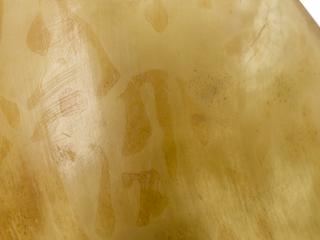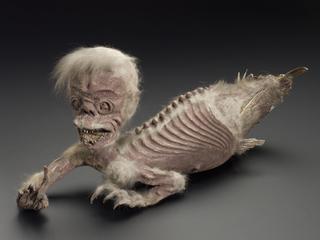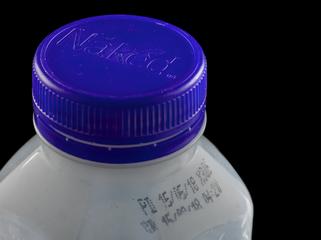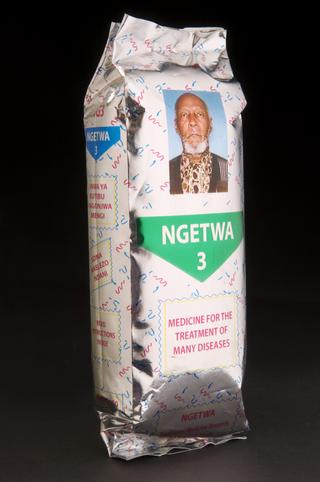
Replica life mask of Taupua Te Whanoa
- Made:
- 1853-1854 in United Kingdom



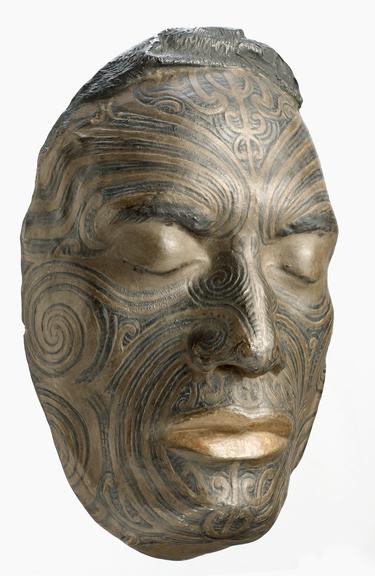
Plaster 'replica' of a cast taken from the living face of Māori chief Taupua Te Whanoa of Ngāti Whakaue, an iwi (tribe), of the Te Arawa confederation, carved and painted to show tattooing, original made in Rotorua, Aotearoa/New Zealand, 1853-1854
This life mask represents Taupua Te Whanoa, chief and tohunga whakairo (master carver) of the Ngāti Whakaue iwi (tribe) of the Rotorua region of New Zealand. Taupua lived in Ohinemutu and was the eldest son of Te Whanoa and the grandson of Pukaki. In late December 1849, he met with British colonial administrator Sir George Grey, then Governor of New Zealand, at Te Ngae (Bay of Plenty) where he agreed to have an impression made of his face. The cast was taken by Grey's assistant, Mr Fletcher, during their visit to Ohinemutu in 1853.
Cast in plaster and painted to show the detail of Taupua’s tattooed skin, this is a copy of the original life mask, which was donated to the British Museum by Grey (Oc1854,1229.93). It was almost certainly made by Major General Horatio Gordon Robley, who added further moko (tattoo) lines.
Multiple such ‘replicas’ were circulated by Robley, who dealt and traded in Māori human remains and artefacts, including mokomokai – the preserved heads of Māori people with moko facial tattoos. First introduced to British collections in the 1700s, when Europeans began the process of colonisation in Aotearoa/New Zealand, the heads became valuable trade items during the Musket Wars of the following century. Robley-associated copies of Taupua Te Whanoa’s life mask also exist in the collections of the Pitt Rivers Museum in Oxford (1903.56.1 and 1943.11.2), Horniman Museum in London (5.12) and Te Papa Tongarewa in Wellington (ME023262, R000003, R000032 and R000033).
Details
- Category:
- Ethnography and Folk Medicine
- Collection:
- Sir Henry Wellcome's Museum Collection
- Object Number:
- A642970
- type:
- life masks and cast

